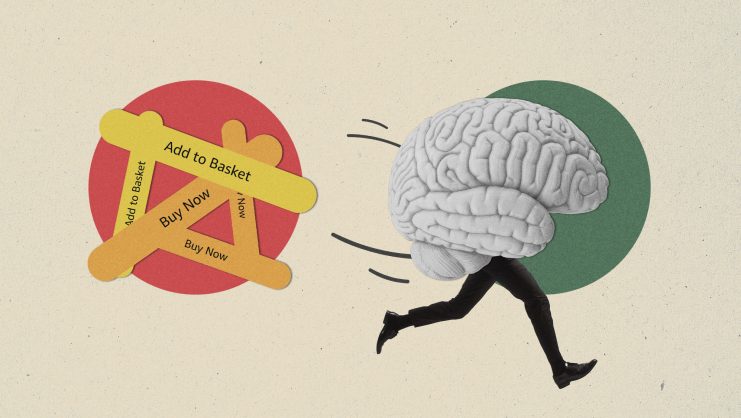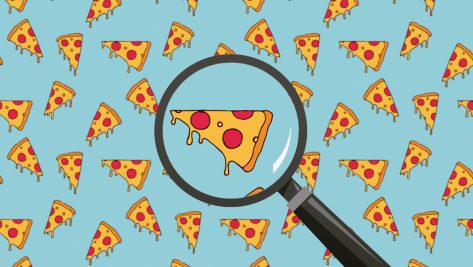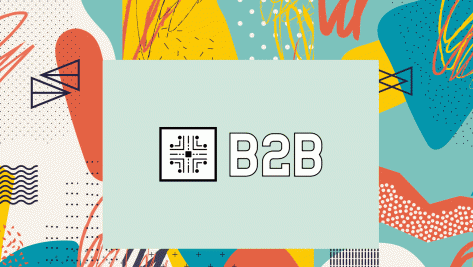Have you ever thought about how it’s possible for someone, from a room furnished with lights and tables they’ve purchased off an Amazon-esque site, to be able to build a followership of thousands, if not millions? It’s likely that person doesn’t have deep pockets nor a CEO-level position (even though many claim to be in the C-suite), or is even surrounded by marketing colleagues with bright CVs. Yet, over time, many such folks seem to have mushroomed. Why is that?
Here’s a hot take: Advertising and marketing will likely soon be replaced by content creation – even more so than it has already – and content creation through social media platforms will become the mechanism by which people are aware of and choose to buy goods and services. In the past, consumers would maintain a “brand horizon,” which is a set of brands that sit on a customer’s subconscious mind. But now, consumers maintain a “values horizon” and come to discover brands as a consequence of those values. In other words, in the past, brands defined our values (and in many cases, they still do) but now, increasingly today, our values define the brands we choose.
A short case to illustrate this idea is the recent tension between Adidas and Kanye West (Ye). Adidas is a legacy brand. Legacy brands have been in the market for a long time and have built strong brand equity based on name, reputation, and quality. The company relies on its brand to sell products and generate revenue. Replace the word Adidas, call it something else, and the brand does stand – sales will plummet.
Legacy brands suffer as they get older and larger and require more management and operation processes. That stifles innovation and this is why we seldom see incremental innovations coming out of large, old legacy brands. Changing consumer preferences, new competitors, and disruptive innovations often trouble them.
On the contrary, brands such as Yeezy, the luxury fashion brand founded by West, have a personal connection with their fans and high customer equity. This is usually based on their influence, charisma, and creativity. They rely on their personality, rather than brand equity, to sell their products and generate revenue.
When Adidas signed West in 2015, the partnership was considered an “earthquake in the urban fashion industry.” Adidas was able to tap into a market that was otherwise unavailable to them, and West was given creative freedom for the Yeezy brand as well as the muscle of Adidas’ legacy brand. The relationship was – at first – reciprocal and profitable with each company gaining something it lacked.
However, at the end of 2022, Adidas terminated its relationship with Ye (as Kanye West became known) and ended production of Yeezy products over Ye’s antisemitic remarks. Adidas chose the values of its customers over the once-lucrative partnership. Adidas knew that even its multi-decade brand could not protect it from Ye’s comments. Values are now the mechanism for consumers to pick their brands.
Here’s another, perhaps more relatable example. Today, we might go to a food delivery app and cycle through restaurants – and on that list are restaurants that are new to us, that we might not have tried yet. In this experience, for me, it’s now the delivery app that represents good times, in regards to food – not the actual restaurant. If a person using the app is vegan or climate conscious, those values will guide food and restaurant choices on the delivery app. These are, in fact, values that people did not care about just a few decades (or even just a few years) earlier and now they guide product decisions.
Indeed, brands no longer define values. Values are the mechanism to pick brands.
How did we get here? Prior to the internet, legacy brands pretty much supplied the values that shape our thinking. Most industries were large market fortresses (Coke, Pepsi, Nike, Reebok, Adidas, Target, or Walmart). The cost of admission was high to enter any market in the pre-internet era and this meant that consumers basically had just a few companies and brands to choose from within any fortress.
More established brands tend to struggle to maintain a vantage point on the customers’ value horizon.
Over time, repeat purchases became the norm and we did not call back to values at all. With no significant competition, and with repeat purchases and constant mindshare, these brands were etched deep into our conscience, enjoying infinite recall. Quite naturally, a limited number of brands cluttered the customer’s horizon, choices were straightforward and limited. Do you remember any competitor to Adidas or Nike who only made shoes from bamboo or ocean plastic in the 1980s? None!
These days, be it Tesla Motors on adoption of EVs, Marques Brownlee’s list of features for the next version of a smartphone, or the idea of cutting carbon emissions by eating a plant-based diet, such purposes and values do not originate first from the big brands. These values appear in the world of users and customers before they reach the legacy brands.
So, what changed? Values are now more accessible and available to all of us. In fact, writing this article in Stockholm, I might influence someone in Ljubljana or Austin. The internet and platforms have enabled the flow of values in real time. Values are being pollinated, watered, and supplied to all of us every minute through a post, picture, tweet, or review, and are then further fertilized by our many interpersonal, group, family, and social media conversations that cut across hyperlocal, local, regional, and global topics. That is to say that consumers own the values and revise them often – and marketing teams and budgets still work in the old business case fashion, which means they trail the speed of values.
Once, we picked brands first. Now we pick values first. However, it is easier to remember our values (for example, caring for the climate) – because values are a part of us, they occupy the infinite subconscious space in our heads – than it is to remember the long list of all the brands that share those values. In fact, it has become increasingly easy for us to find brands that reflect our various and individual values. All those values form a horizon because we tend to relate to them as a whole. That is the values horizon. And, with many such values available and accessible, it is the values horizon that serves as the mechanism to choose brands. In other words, values stand in front while brands sit behind the values horizon.
Founders build a business or a brand around something they care about deeply. That business becomes big enough because it serves all those who care about the same values the founder cares about. Values are the playground for competing with other companies. So, serving these value horizons also becomes a mechanism to findng new niche markets and building businesses.
The battle is who serves any given value better and this is why many new and previously unknown brands continue to emerge. This also means that the cost of admission doesn’t matter anymore. As a result, markets that are centered around older brands get abandoned as consumers move to markets that are centered around values.
So, one moves from Adidas to a company like Allbirds. From there, no amount of marketing dollars can move you back to Adidas. That’s because people are less likely to switch brands on brand names, they will not compromise their personal values. Understanding the values horizon can allow any business to compete for that small cohort of customers – and that’s why we see brands mushrooming all around the world.
Since value exchange outpaces the speed with which traditional brands learn about them, older brands tend to “catch up” to the values market rather than introduce that value into the market. In fact, they take shortcuts, for example the way Adidas partnered with Kanye West. This is why D2C, SMB and individual brands covering all kinds of product categories are now layered on top of traditional brands. More established brands tend to struggle to maintain a vantage point on the customers’ value horizon. Furthermore, if and before they do, the brand undergoes a change that is not always intentional.
The next time you are on YouTube, make note of the companies who are advertising. Eight out of 10 will more than likely be older brands looking to squeeze into your values horizon by passing off as something you care for. The older brands rely on ads and endorsements, but they don’t always work because, in the end, the values don’t match that of the audience and those customers – more educated and aware than ever before – are quick to notice.
The value horizon is a minimum set of relevant, purposeful, and honest values that any given consumer requires to feel socially, emotionally, and functionally satisfied with their life. It’s the new mechanism to choose brands. A brand is simply a reinforcement of those values, one that fits tightly with the values of that company’s customers.
Today’s consumers will settle for nothing else. That’s why ads and marketing strategies do not really mean all that much and seldom move a value-driven customer to a brand-driven one.
© IE Insights.











